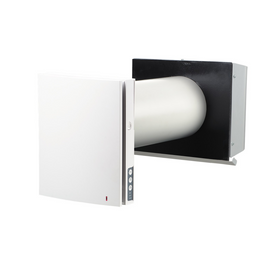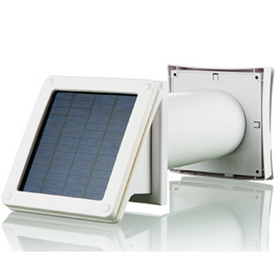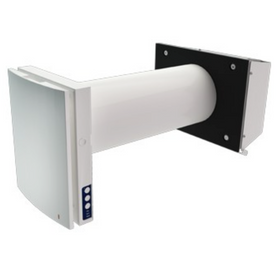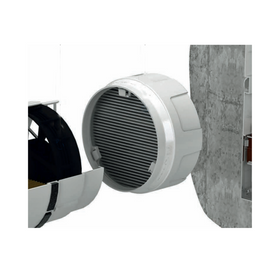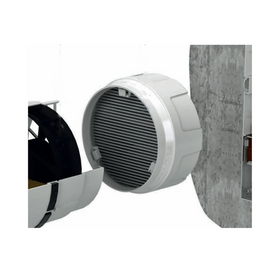
Carbon Monoxide Detectors Guide
Last Updated: Mar 29, 2025Carbon monoxide is a silent killer. Odorless, tasteless, and colorless carbon monoxide slowly poisons people who breathe it.
Table of Contents
- What Increases Carbon Monoxide at Home?
- Does Carbon Monoxide Affect Our Health?
- What Should You Do if Your Carbon Monoxide Detector Goes Off?
- How Can You Reduce Carbon Monoxide At Home?
- How Do Carbon Monoxide Detectors Work?
- Are Certain People More Susceptible to Carbon Monoxide Poisoning?
- When Do Carbon Monoxide Detectors Go Off?
- What Types of Carbon Monoxide Detectors Are Available?
- How Many Carbon Monoxide Detectors Should You Have in Your Home?
- Where Should Carbon Monoxide Detectors Be Placed?
- How Do You Install Carbon Monoxide Detectors?
- What Are the Best Brands of Detectors?
- Can You Get Combined Carbon Monoxide and Fire Detectors?
- Do Smart Networked Carbon Monoxide Detectors Exist?
- How Long Do Carbon Monoxide Detectors Last?
- How Often Should You Replace Batteries in Detectors?
- What Are the Benefits of Carbon Monoxide Detectors?
- What Are the Drawbacks of Carbon Monoxide Detectors?

What Increases Carbon Monoxide at Home?
If you have gas appliances, you are at increased risk of carbon monoxide poisoning. These appliances include kitchen ranges, ovens, dryers, gas furnaces, and fireplaces. Carbon monoxide levels also shoot up in houses with attached garages when people heat their cars in winter without opening the garage door.

Does Carbon Monoxide Affect Our Health?
Extensive exposure to the gas can be fatal. But even marginal exposure causes fatigue in otherwise healthy people, angina, chest pain, impaired vision and coordination, flu-like symptoms, nausea, and headaches.
Mayo Clinic adds to the list the following: Weakness, dizziness, vomiting, confusion, shortness of breath, blurred vision, and loss of consciousness. Nothing you would ever want to experience if you could avoid it.
Luckily, you can easily avoid it with a minimal investment in carbon monoxide detectors. Many CO detectors include smoke detection technology, offering a two-for-one warning device. With a loud, abrasive, and startling alarm, CO sensors will wake you or warn you quickly.
What Should You Do if Your Carbon Monoxide Detector Goes Off?
Should the alarm ring, first ensure the detector has not malfunctioned since some units set off the alarm when the battery needs replacing. Then leave your home. Call the gas company immediately, and they will come and inspect your home for free.
How Can You Reduce Carbon Monoxide At Home?
- Make sure you turn off your gas oven or range as soon as you finish with them.
- Ensure proper ventilation in homes with gas water heaters, gas-powered boilers, and space heaters.
- Never use a gas grill in your garage.
- Never use portable gas heaters inside your home.
- Consider replacing gas-powered appliances with electric options!
So, what else do you need to know? Plenty, and here's an introduction to the most common questions about CO detectors. If you buy a combination CO/fire detector, the same advice will be correct.

How Do Carbon Monoxide Detectors Work?
CO detectors warn residents based on risk. All CO sensors must meet Underwriters Laboratories Inc. Standard UL2034. This standard requires manufacturers to set off alarms at different levels.
Are Certain People More Susceptible to Carbon Monoxide Poisoning?
As we highlighted earlier, anyone can suffer from CO leakage. But unborn babies suffer significantly because their blood cells absorb CO faster than adults. Children breathe more often than adults, leaving them more frequently than adults do, making them more vulnerable to CO. Older adults who breathe CO could develop brain damage. Those with chronic heart disease could suffer much from exposure.
When Do Carbon Monoxide Detectors Go Off?
Detectors give you a heads up if the carbon monoxide level in your home is above safe levels. The more CO in the air, the faster the detector's alarm goes off. At 400 parts per million (PPM), the alarm rings within four to 15 minutes. A person breathing air with that level of CO could suffer headaches, dementia, and hull from one to two hours at that level.
At 150 PPM, the alarm goes off if the exposure lasts from 10 to 50 minutes. Two to four hours of air at the level could cause headaches and mental impairment.
And at 70 PPM, the alarm goes off if the air maintains that level for one to four hours. Fatigue and difficulty concentrating follow should you be exposed that long.

What Types of Carbon Monoxide Detectors Are Available?
Carbon monoxide detectors differ based on their power source. Some are hardwired, others are battery-powered, and some simply plug into an outlet.
Hardwired
Hardwired detectors connect to your home electrical system and will need professional installation. Most come with battery backup just in case the electricity fails.
Battery-Operated
Battery-operated detectors come with two advantages. One, you can install them with a drill and screwdriver. They work even if the electricity goes out and your home is on fire. Many models have batteries that need replacement annually. Models with lithium batteries last the life of detectors.
Plug-in
Plugin CO detectors have the simplest of installations – you plug them into an outlet. This type of CO detector also has a battery backup in case of power outages. If you purchase this type, ensure that you replace the battery as per the manufacturer's guidelines.

How Many Carbon Monoxide Detectors Should You Have in Your Home?
You should install CO detectors on every floor, according to the Consumer Product Safety Commission.
Where Should Carbon Monoxide Detectors Be Placed?
Hallways and walls outside bedrooms and kitchens are good places to add detectors. Position them between five and twenty feet from combustion-producing equipment. Avoid laundry rooms and bathrooms or other high humidity areas. Place the sensors on a surface or wall five feet above floors if possible. Placing one in your garage is not a bad idea, either.

How Do You Install Carbon Monoxide Detectors?
Homeowners and apartment dwellers will find CO detectors relatively simple to install. If you're not handy, consider a model that sits on a shelf or floor. Portable models are also available.
To install detectors:
- Grab a stepladder, a drill, and a pencil.
- Use the detector's mounting bracket to pencil in where you plan to drill.
- Use a drill bit slightly smaller than the diameter of the screw anchors.
- Tap in anchors with a hammer.
- Then position bracket and add screws.
- Once in place, install the detector into the frame after adding the right batteries.
- Test the sensor a few times to ensure the alarm works.
What Are the Best Brands of Detectors?
Many manufacturers produce CO detectors. Among the best in class brands include Kidde, First Alert, and X-Sense. First Alert has models that sit on shelves, requiring no installation. Kidde has a plugin model.

Can You Get Combined Carbon Monoxide and Fire Detectors?
Yes, combination detectors are widely available from Google Nest, First Alert, Kidde, and others. Reviews have been universally strong for these products. They reduce the number of detectors you have to install in your home, along with the amount of drilling and wall or ceiling space devoted to safety products.
Do Smart Networked Carbon Monoxide Detectors Exist?
More sophisticated CO detectors can be networked together. If one detects CO, they all set off their alarms. A first-floor alarm triggers alarms on other floors, warning you CO has become a potentially dangerous problem. The units, in some cases, wirelessly connect without using a home's wifi or cellular networks.

How Long Do Carbon Monoxide Detectors Last?
Product warranties last between five and ten years. Combination smoke-CO detectors may need replacement more often. If your unit does not have an expiration date, that probably indicates it may be time for a new one.
How Often Should You Replace Batteries in Detectors?
Batteries in detectors do not, of course, last as long as the detectors. Units will chirp when batteries need replacing. Usually, they need replacing once, sometimes twice, annually. They all have buttons for testing the alarms. It's a good idea to test the detectors to ensure they work properly periodically.
What Are the Benefits of Carbon Monoxide Detectors?
CO detectors, or combination CO and fire alarms, remain outstanding investments. They cost as little as $20 a unit and rarely exceed $100, yet they save lives. CO can render occupants unconscious and prove lethal if not stopped. Children, older adults, pets, and medically fragile suffer even from modest exposure to CO. It should be standard equipment in all houses.
What Are the Drawbacks of Carbon Monoxide Detectors?
No drawbacks exist. Yes, it would be best if you replaced batteries when they wore out or even before you get the irritating warning. Sometimes the chirpy battery replacement warning comes at 3 a.m., an unpleasant occurrence. That's a small price to pay for not having to fear CO poisoning, a persistent problem in homes with gas heat and cooking.
Frank Jossi
Based in St. Paul, Frank Jossi is a journalist, editor and content strategist. He covers clean energy in Minnesota for Midwest Energy News and writes frequently for Finance & Commerce. His work has appeared in more than 70 local, national and international publications.



